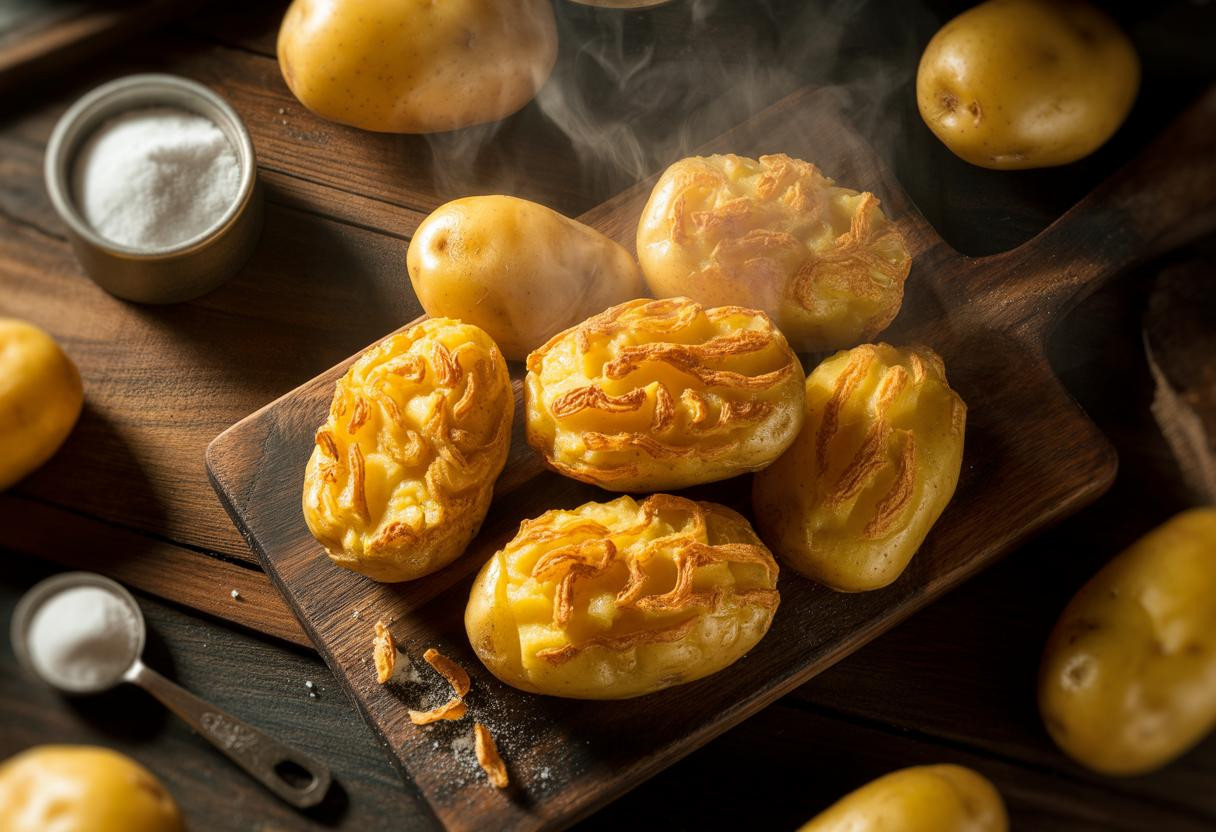Professional chefs guard their secrets like precious treasures, but today we’re revealing the single ingredient that transforms ordinary roast potatoes into golden, impossibly crispy masterpieces. This kitchen game-changer has been hiding in your pantry all along, and once you discover its power, you’ll never make soggy potatoes again.
The alkaline revolution that changed everything
The secret isn’t exotic or expensive—it’s baking soda. When added to boiling water, this humble ingredient raises the pH to alkaline levels, breaking down pectin that holds potato cells together. “I’ve tested every method imaginable, and nothing comes close to the crispiness achieved with baking soda,” explains Chef Marcus Rodriguez from Chicago’s acclaimed Harvest Kitchen. This molecular breakdown releases starch onto the surface, creating a natural coating that transforms into an irresistible crust.
Science meets kitchen magic in your pot
Think of baking soda as a molecular locksmith, unlocking the starch trapped within potato cells. As the alkaline water works its magic, it creates microscopic roughness on the surface—like sandpaper made of pure potato goodness. This starchy slurry becomes your secret weapon against disappointing, limp potatoes.
The cornstarch challenger enters the arena
Cornstarch offers an alternative approach, working like armor plating for your potatoes. Unlike baking soda’s internal transformation, cornstarch creates an external barrier that crystallizes under high heat. Food scientist Dr. Sarah Chen notes, “Cornstarch provides consistent results because it adds starch rather than relying on what’s naturally in the potato.”
Master the technique in four simple steps
- Add ½ teaspoon baking soda to 4 pounds of potatoes in boiling water
- Parboil for 8-10 minutes until edges soften
- Drain and shake vigorously to rough up surfaces
- Roast at 425°F for 45 minutes, turning once
Temperature precision creates perfection
Like a precision instrument, your oven becomes a dehydration chamber. The high heat rapidly evaporates surface moisture while the starch gelatinizes into that coveted golden crust. Professional kitchens maintain temperatures between 400-450°F for optimal starch crystallization.
Regional secrets from around the globe
British Sunday roasts rely on this alkaline method, while Asian cuisines favor cornstarch coatings for their signature crunch. Italian nonnas have whispered about adding bicarbonate to their patate arrosto for generations, proving this technique transcends cultural boundaries.
Essential tools for crispy success
- Large pot for proper water circulation
- Rimmed baking sheet for even heat distribution
- Kitchen scale for precise measurements
- Colander for aggressive shaking
Beyond basic: advanced crispy combinations
Combining both methods creates multilayer crispiness—baking soda for internal starch release, then a light cornstarch dusting for extra crunch. This hybrid approach delivers restaurant-quality results that maintain their texture even after cooling. Just like how fermented foods improve gut health through scientific processes, these techniques use chemistry to enhance natural ingredients.
Why does this simple trick work so brilliantly?
Your kitchen holds unlimited potential for culinary transformation. This single ingredient proves that extraordinary results don’t require exotic components—just understanding the science behind cooking. Every perfectly crispy potato becomes a testament to the magic hiding in everyday pantry staples, waiting to elevate your next meal.
